Thallas Griffin sat on an overturned shopping cart near a Texas 71 overpass, begging for money, hoping to gather the $52 he needed for a hotel room.
“I'm just trying to get a grip and get back to where I was,” said the 68-year-old, who was surrounded by a mishmash of mostly drenched cardboard boxes and trash in a makeshift camp. “I'm too old to just live in the streets."
Homelessness has long been a part of the fabric of Austin, historically a small but conspicuous problem generally confined to Congress Avenue panhandlers and greenbelt campers. But in recent months, trash-filled encampments have proliferated across the city — under highways, at bus stops, along strips of wooded areas beside roads. Throngs of people linger along the blocks surrounding the city homeless shelter — the Austin Resource Center for the Homeless (ARCH) — on East Seventh Street, hanging out with friends, dealing drugs or resting in tents.
There are a number of reasons for the sudden explosion of homelessness in public places, homeless advocates say. The ever-increasing price of housing is driving more people onto Austin’s streets. Development across the city has pushed people out of camps in wooded areas. The Texas Department of Transportation stopped cleaning out camps under highways.
And the city’s cramped homeless shelter is often shunned by those who need it most because of its strict rules and because it has become a target-rich environment for predators of all kinds.
This year, the annual Point In Time Count, which counts people living on the streets and in shelters, showed that homelessness in Austin jumped 5% from 2018. Since 2015, it has grown 23%, from 1,832 people to 2,225. The number of people living on Austin streets, but not in shelters, has also grown. In 2015, there were 667 unsheltered people. That number jumped to 1,086 in 2019, a 63% increase.
For years, Austin dealt with homelessness by focusing on providing food, emergency shelter and job placement without addressing the complex problems that drive people to the streets and keep them there. Over the last decade, local homeless organizations began to focus more on coordinating, collecting data, building supportive housing and providing social services. Now, they are pushing a more targeted approach to homelessess, focusing on comprehensive, long-term solutions.
The push for solutions comes after years of missteps in the city’s efforts to address homelessness. Those missteps, combined with the growing homeless population, have created a tense and sometimes dangerous daily reality that takes its toll not just downtown, but increasingly across Austin’s sprawling landscape.
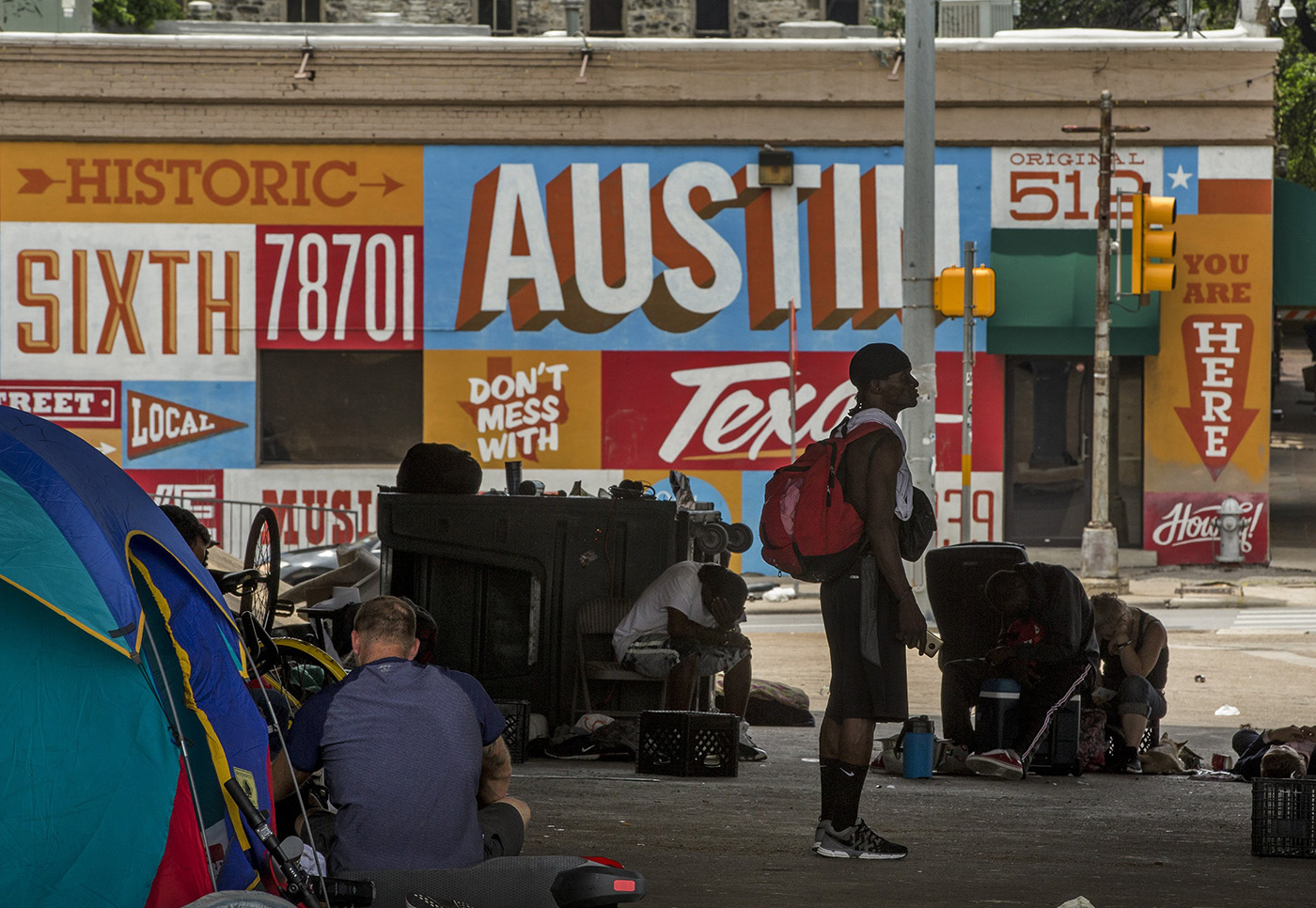
Past efforts
Part of what makes tackling Austin’s homeless problem so difficult is that it’s nearly impossible to quantify. The annual Point In Time Count provides a snapshot, but doesn’t include people in jails, mental institutions or hospitals. It also doesn’t account for people living with friends, in hotels or other locations.
Based on statistics captured by the Ending Community Homelessness Coalition (ECHO), at least 7,700 people experience homelessness in Travis County each year.
Over the years, the city has undertaken a number of efforts to address the symptoms of homelessness.
Among those efforts were several “quality-of-life” ordinances. There are restrictions on panhandling, camping in public places, and sitting or lying in parts of downtown. Those Class C misdemeanors can come with fines up to $500.
Between December 2017 and November 2018, police issued 317 tickets for sitting, lying or sleeping in public downtown; 187 tickets for camping in public; and 234 tickets for aggressive panhandling. Many people were cited multiple times.
The ordinances help maintain some control, but homelessness is a societal problem, said Austin Assistant Police Chief Justin Newsom.
“You can never arrest your way out of a social problem. How’s that war on drugs going?” Newsom said.
City officials are considering repealing or revamping those ordinances because homeless people can’t pay the tickets. Unpaid tickets turn into warrants, which lead to arrests and criminal records that can prevent homeless people from getting housing and jobs.
Police often issue those tickets near the ARCH. Built in the heart of downtown in 2004 to help get people off Austin’s streets, it has come to symbolize the city’s struggle with homelessness.
Scores of people gather daily outside the building, smoking, sleeping, resting in tents or selling drugs. Many people outside the ARCH aren’t homeless, and most never use the city-owned facility’s services. Instead, they come to socialize or prey on the vulnerable.
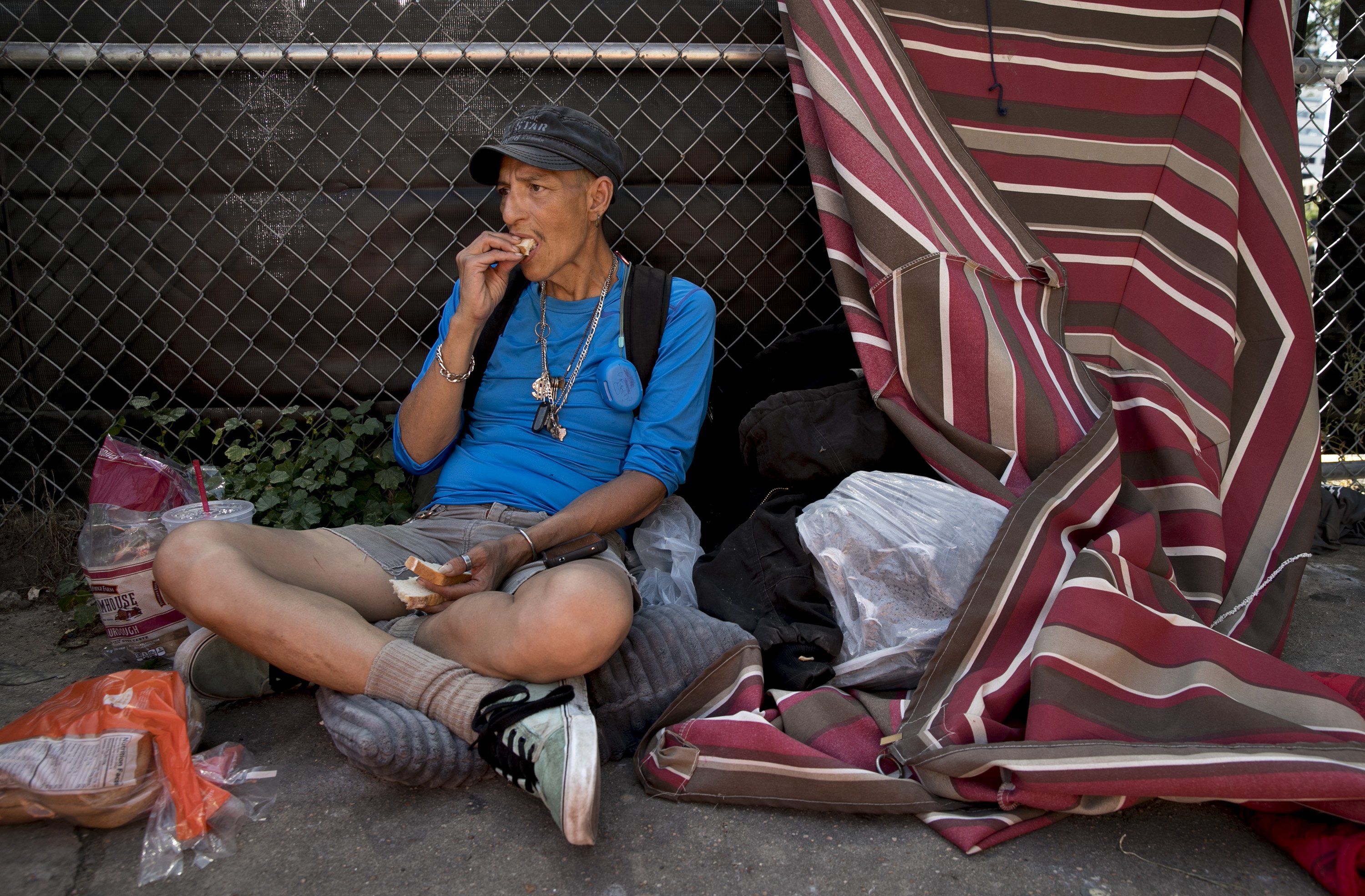
This wasn’t the plan. In the late 1990s, homeless advocates and city leaders envisioned a one-stop, 3-acre campus where people could get emergency shelter, affordable housing, social services, even employment. The 28,000-square-foot, 100-bed building next to The Salvation Army was heralded as a place that would set people on the path to permanent housing.
Things went awry. Desperate for a place to shelter people, the city started laying down mats. Some nights, it hosted as many as 230 people, said Greg McCormack, executive director of Front Steps, which is paid by the city to run the shelter. Many of those people never got social services.
Fewer people stay at the shelter now, between 150 and 170 per night, for a variety of reasons. The facility has strict hours. Smoking is not allowed, and there is nowhere for pets. Sleeping quarters are close. The shelter also uses a lottery system to determine who gets in at night and, after having been turned away previously, some people have stopped trying.
Others feel intimidated by the throngs lingering in front of the shelter.
Later this year, the ARCH will begin housing no more than 130 people per night. Beds will be reserved for those who are getting connected to housing programs, medical services, mental health care and other necessities. It may not improve the situation outside the ARCH, but the goal is to focus on getting people into permanent housing faster.
“The intent was always for ARCH to be a temporary shelter, a triage pass-through,” said Bill Brice with the Downtown Austin Alliance, which advocates on behalf of downtown property owners, residents and businesses. “Unfortunately, it became like a dead end.”
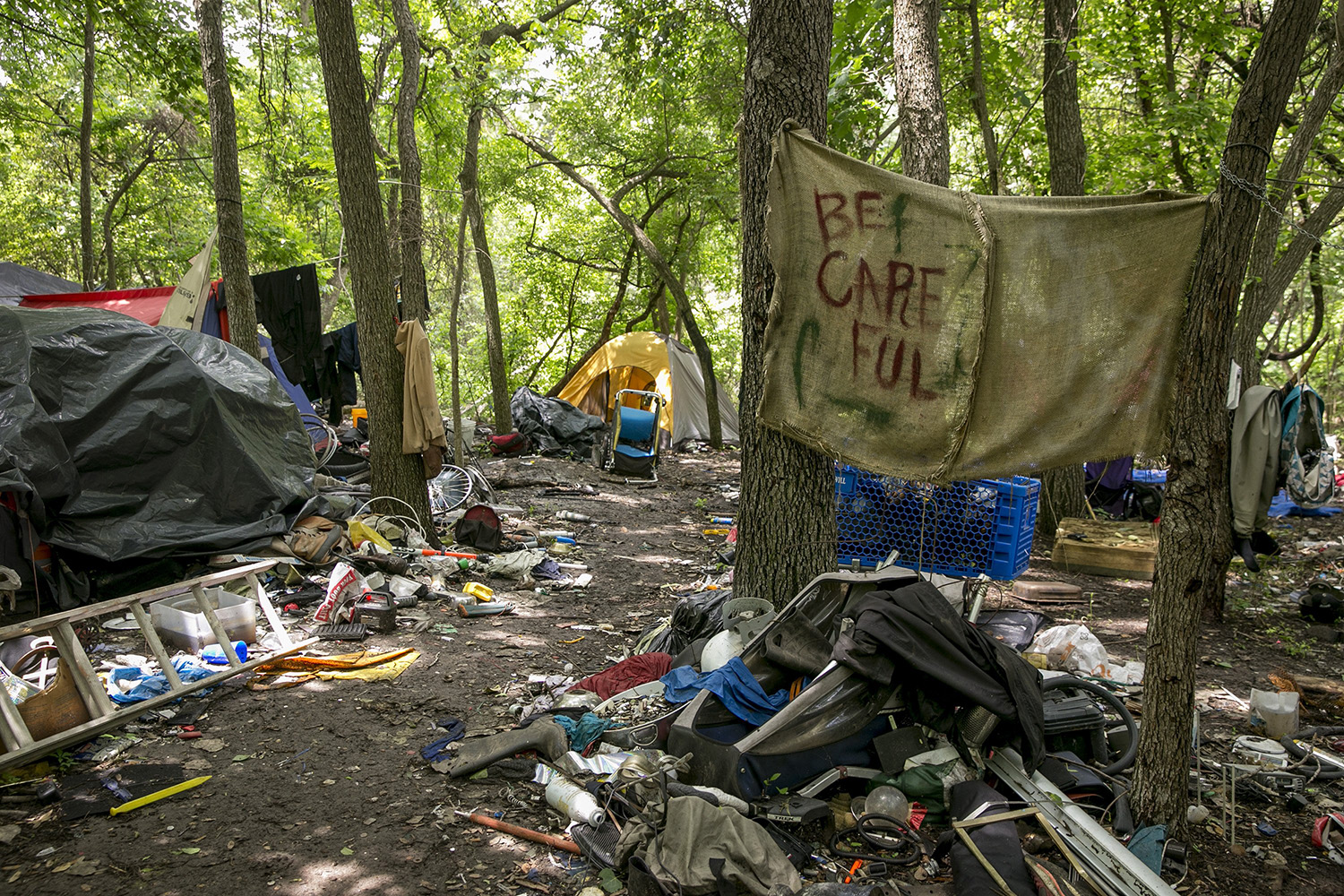
Looking for examples
Nationally, more than half a million people are homeless on any given night, according to the National Alliance to End Homelessness. Although numbers have risen slightly over the last few years — 0.3% between 2017 and 2018 — the epidemic has seen a downward trend since 2007, as communities focus on permanent housing.
New Jersey's Bergen County has been heralded by the U.S. Department of Housing and Urban Development as having effectively eliminated chronic homelessness by creating a one-stop shop for homeless services. The county also focused on collaborations with local landlords and service providers.
In Texas, the Houston area saw a 5% decrease in homelessness since 2018 and a 21% decrease since 2015.
That city focused on the homeless who live on the streets, said Eva Thibaudeau, chief program officer with the Coalition for the Homeless of Houston/Harris County. The group sought federal grants for that population. Staff worked with nonprofits to make sure they could connect the homeless to services and housing, and put more money into permanent housing.
New approach
In its quest for solutions, Austin is taking a broad approach.
The City of Austin each year spends between $30 million to $35 million of its $4.1 billion budget on homeless services, such as health, housing and court programs.
The city has worked to foster collaborations among nonprofits, service providers and landlords. But a December 2017 audit noted the city hadn’t effectively coordinated its various efforts. Nearly 18 months later, the city is still looking for a permanent homeless strategy officer.
The city is also developing more affordable housing. Voters last year approved $250 million in bonds for the effort. The nonprofit Community First! Village is expanding its East Austin project, which already houses more than 200 once-chronically homeless people in tiny houses, RVs and canvas-sided cottages. And the Downtown Austin Alliance has promised $2 million to help grow the program.
There also are outreach teams that directly work with Austin’s homeless. The city’s mental health authority, Integral Care, is building an apartment complex that will house about 50 homeless people who will receive a variety of services designed to keep them stable. ECHO has launched an initiative to house and provide services for up to 250 homeless people in Travis County using a new funding model where investors pay upfront costs and are reimbursed by local governments only if the project’s goals are met.
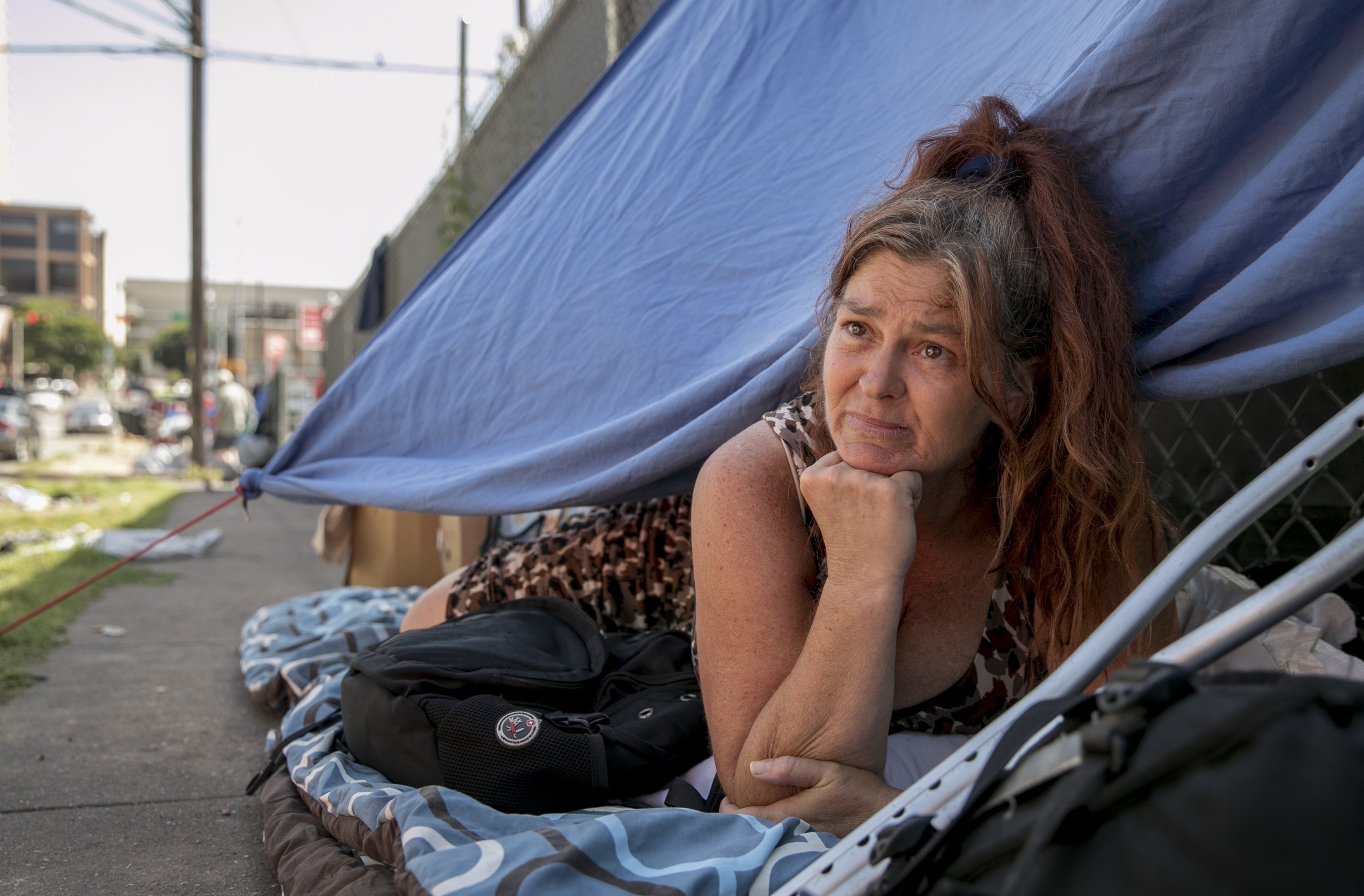
Foundation Communities, which builds affordable housing, is constructing a new apartment complex with efficiency apartments for 132 single adults. Lifeworks, which serves at-risk youth, is leading a targeted effort to end local youth homelessness with a $5 million grant from the U.S. Department of Housing and Urban Development.
The City of Austin also recently approved a $1.2 billion expansion of the convention center in exchange for hoteliers agreeing to increase hotel taxes on their guests within a new tourism taxing district. The tax is expected to raise $4 million to $8 million a year for homeless assistance.
“I’m actually in the camp of being optimistic for our future,” said David Evans, executive director of Integral Care.
But tensions are mounting downtown, where some say panhandling has become more aggressive and crime by the homeless has become more blatant. Craig Staley, who co-owns six Royal Blue Grocery stores downtown, has compassion for homeless people, particularly those with profound mental illness. But the problems have escalated, with some people assaulting staffers and stealing, he said.
“It has become a lot more brazen,” Staley said. “That’s tough to deal with.”
Veronica Briseño, interim homeless strategy officer, said she understands the frustration with the pace of improvement.
“Yes, we are making progress, but at the end of the day are we happy there are people on the street?” she said. “No. We want to see a very different reality.”
There are competing ideas about how to make that vision reality, though. One example city officials have considered is Haven for Hope, a 22-acre campus for homeless people in San Antonio that offers shelter and an array of services in one location. Another idea is to build small shelters across the city, which would provide emergency beds away from the temptations of the entertainment district.
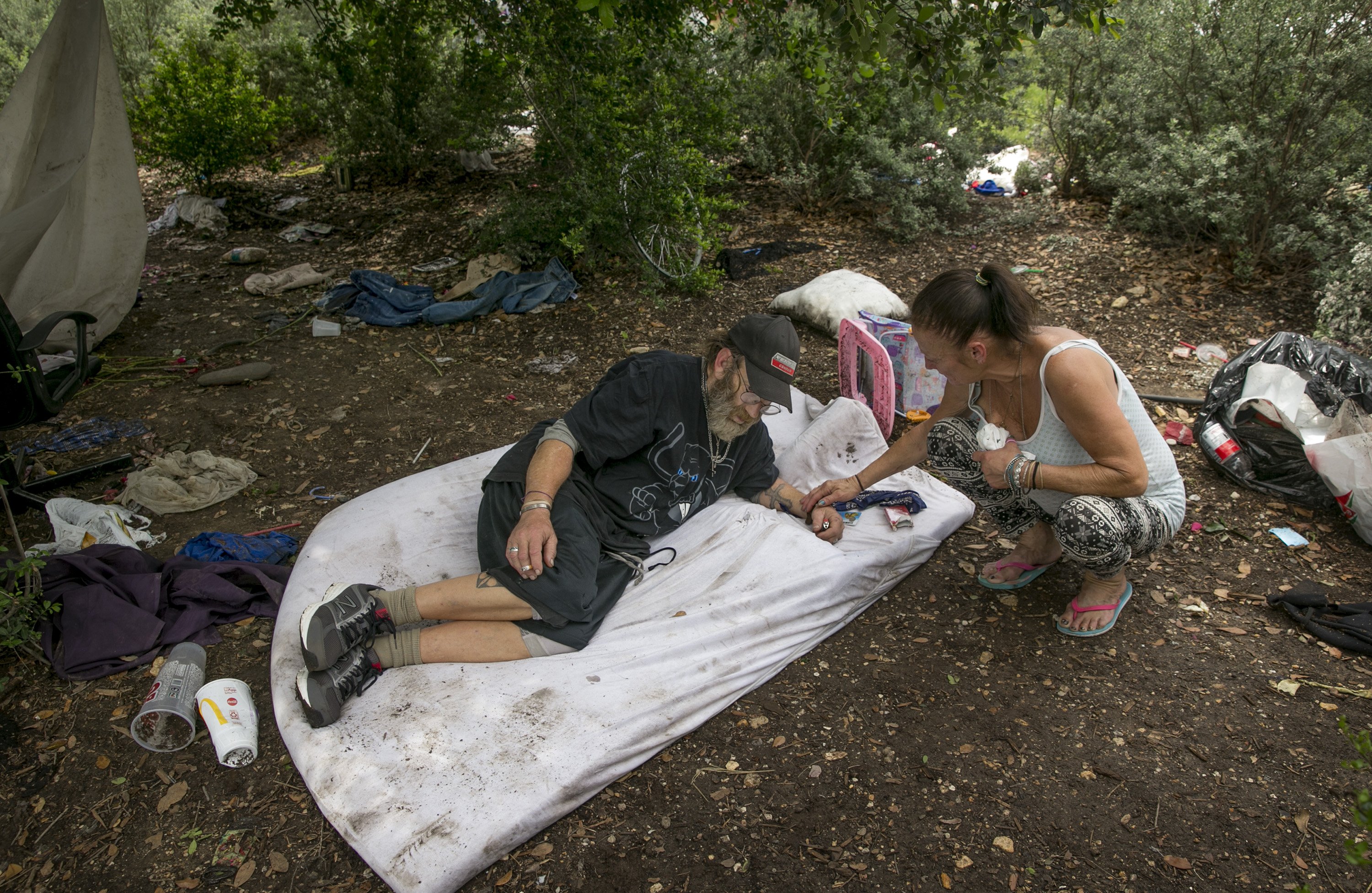
Alan Graham, founder of Mobile Loaves and Fishes — which runs Community First! Village — believes the city should focus on chronically homeless people living on the streets.
Ann Howard, executive director of ECHO, said Austin should scale up the programs that work. ECHO is working with the city to ensure that some of the $250 million in bond money includes housing for people with criminal records.
Despite the challenges, there are success stories. The city has reduced the number of homeless veterans and youth by investing in getting them into housing as quickly as possible. And despite long waits, homeless advocates are moving people into permanent housing by targeting their specific needs.
Shirley Erskin is one of the success stories. She has spent most of her days for the past few years on a pallet on the corner of Seventh and Red River streets, begging for money to buy the soda water she loves.
Most people turn her away, she said recently, convinced she’ll use their money for drugs or booze. Despite the rejections, Erskin, 66, wore a wide smile. "I had good news today," she said, telling workers with the city's Homeless Outreach Street Team, or HOST, that she had just been placed in permanent housing.
HOST is a collaboration of Austin police, Austin-Travis County EMS, Integral Care and the Downtown Community Court. It has been working since 2016 to help connect homeless people to community resources.
"God, he works in my life every day. Every day," Erskin said.
Dangerous reality
While the city continues grappling for solutions, the dangers of life on Austin’s streets become more apparent daily, especially for those who live on them. Many people have died from falling off bridges, being hit by cars, drug overdoses or untreated health problems, said Richard Troxell with House the Homeless.
One homeless man, Craig Mayes, drowned in May after he was swept away by floodwaters while bathing in Shoal Creek.
The Salvation Army is planning to move its families out of its shelter downtown, because it’s too dangerous for children to stay at the current location next to the ARCH.
And police say that while assaults on strangers are rare, conflicts regularly arise within the homeless community.
Thallas Griffin, who suffers from chronic pain, HIV and diabetes, said he tries to avoid the violence, staying away from downtown, especially at night.
“I prefer to be somewhere safe,” he said. “I’m not ready to die."